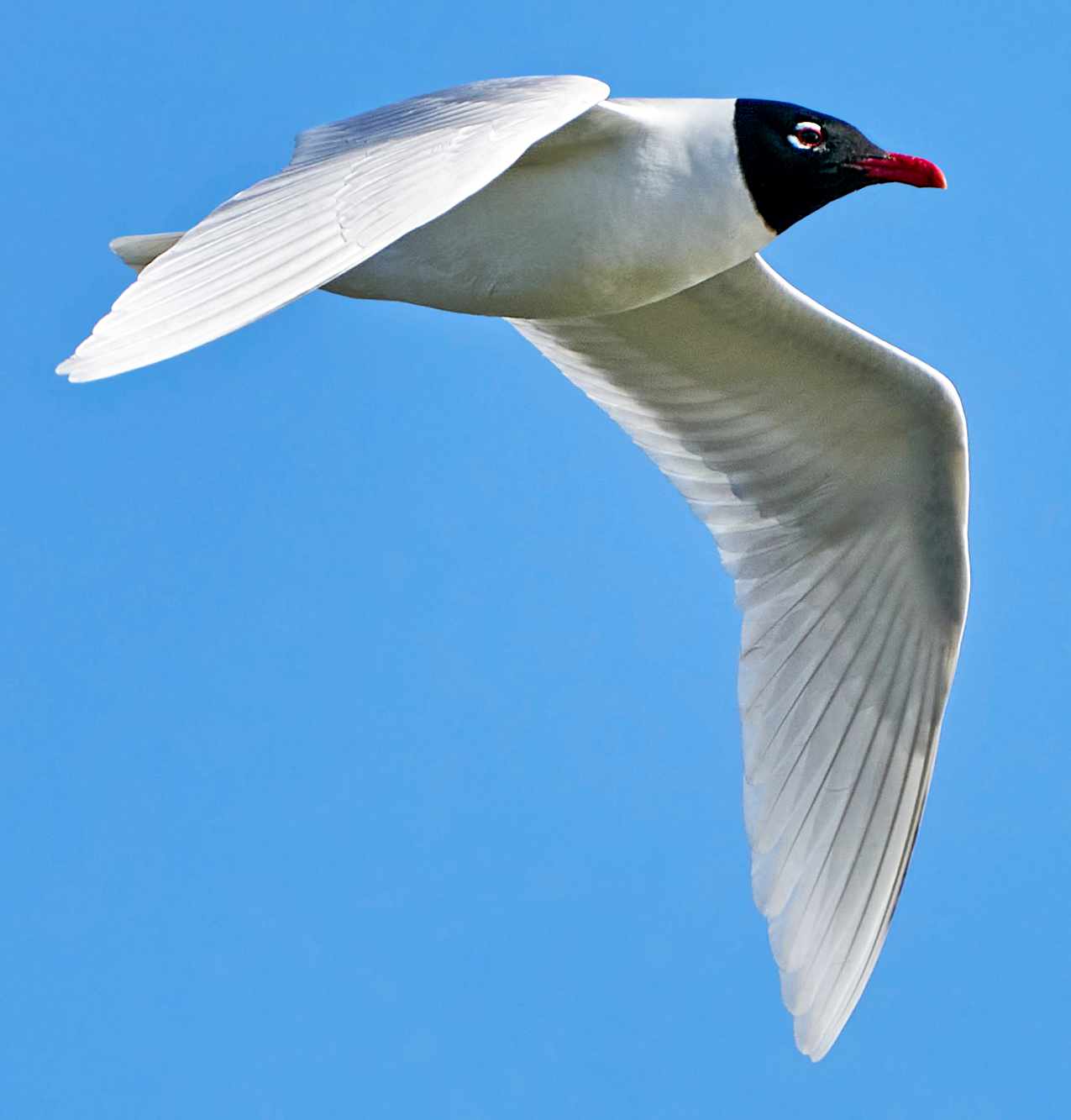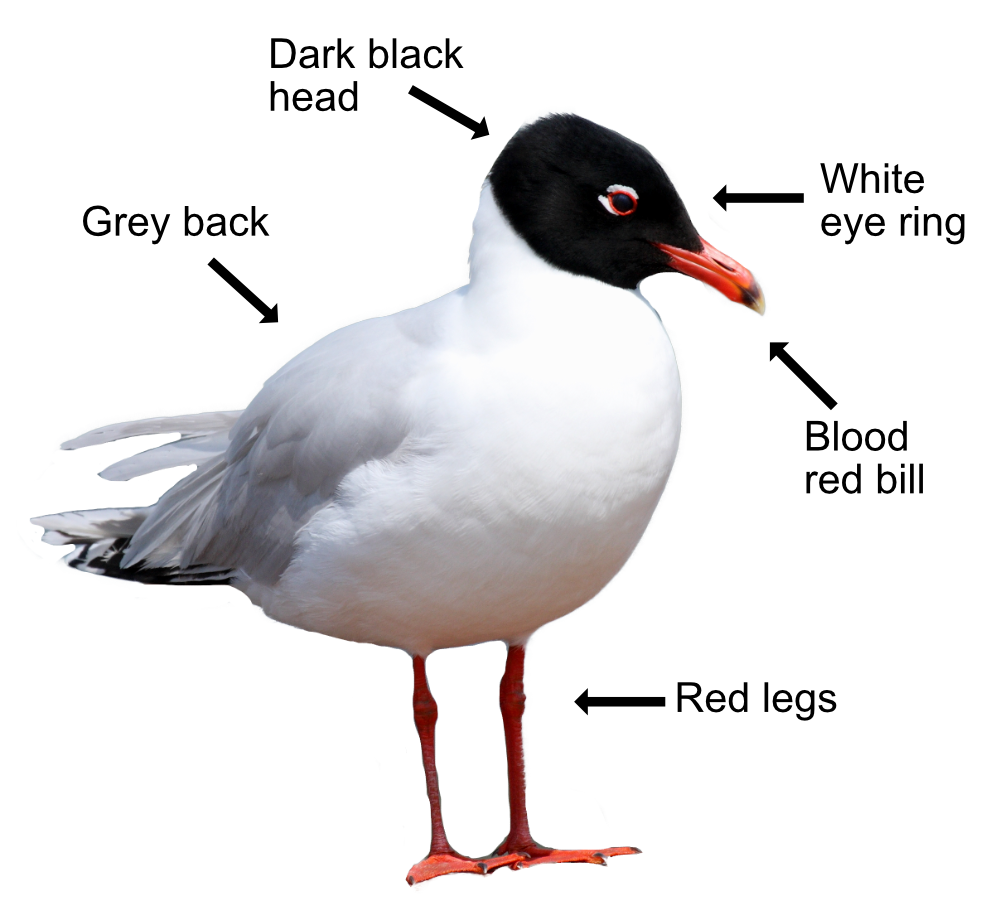
Mediterranean Gulls can be hard to tell apart from Black-headed Gulls until you see one, and then they stand out a mile with their blood-red bills. If you aren't sure, it's a Black-headed Gull. Unsurprisingly, they are mainly found in the Mediterranean, mostly around the Black Sea and in central Turkey, and they are a relatively new arrival in Britain. Numbers are increasing steadily and they started to breed here in 1968.

The Mediterranean Gull is more bulky and thick-necked than the Black-headed Gull. In summer, they have a dark black head with a white ring about their eye, a pale back, a striking, thick blood-red bill, and bright red legs. In winter, they have a white head with a dark smudge behind the eye similar to the Black-headed Gull. Youngsters have scaly brown backs. When flying, their wings are pure white with no black wing tips. On the ground, they stand upright like a soldier on parade. Their call is a mewing cat-like "wee-ah" similar to an Eider duck.
They feed on insects in the summer and fish and marine animals in the winter, though like most gulls they will eat just about anything including worms, eggs, offal and carrion.
Mediterranean Gulls nest in colonies on marshes or fields near water, frequently amongst Black-headed Gulls. Trying to spot them is like 'Where's Wally?' but they often occupy the higher ground. Breeding starts in May, and the nest is a shallow scrape in the ground, lined with grass and feathers. Both mum and dad incubate the 3 eggs which hatch after 35 days. The youngsters soon leave the nest and hide in nearby vegetation. Mum and dad feed them until they can fly 35 days later and become fully independent. Most Mediterranean Gulls will head to the warmer southern Europe in July.
About 1,200 pairs breed here and are specially protected because of the low numbers. Most of their breeding sites are in the south and south-east of England.
Their Latin name is 'ichthyaetus melanocephalus' where 'ichthyaetus' is derived from the Ancient Greek 'ikhthus' for 'fish' and 'aetos' for 'eagle'. The 'melanocephalus' is from 'melas' for 'black' and 'kephalos' for 'headed'. Black-headed fish eagle is a little over the top. Maybe the blood-red bill scared the scientists.